Hammertoes - Treatment & Surgery Cartersville GA
What is a Hammertoe?
Hammertoes are a contracture—or bending—of the toe at the first joint of the digit, called the proximal interphalangeal joint.
This bending causes the toe to appear like an upside-down V when looked at from the side.
Any toe can be involved, but the condition usually affects the second through fifth toes, known as the lesser digits.
Hammertoes are more common to females than males. A podiatrist can recommend proper hammertoes treatment and surgery if needed.
Symptoms of a Hammertoes?
- Pain upon pressure at the top of the bent toe from footwear.
- The formation of corns on the top of the joint.
- Redness and swelling at the joint contracture.
- Restricted or painful motion of the toe joint.
- Pain in the ball of the foot at the base of the affected toe.
How Do You Get a Hammertoe?
A hammertoe is formed due an abnormal balance of the muscles in the toes.
This abnormal balance causes increased pressures on the tendons and joints of the toe, leading to its contracture.
Heredity and trauma can also lead to the formation of a hammertoe.
Arthritis is another factor, because the balance around the toe in people with arthritis is so disrupted that a hammertoe may develop.
Wearing shoes that are too tight and cause the toes to squeeze can also be a cause for a hammertoe to form.
What Can You Do for Relief?
- Wear a shoe with a deep toe box.
- Avoid heels more than two inches tall.
- A loose-fitting pair of shoes can also help protect the foot while reducing pressure on the affected toe, making walking a little easier until a visit to your podiatrist can be arranged. It is important to remember that, while this treatment will make the hammertoe feel better, it does not cure the condition. A trip to the podiatric physician’s office will be necessary to repair the toe to allow for normal foot function.
- Avoid wearing shoes that are too tight or narrow. Children should have their shoes properly fitted on a regular basis, as their feet can often outgrow their shoes rapidly.
- See your podiatric physician if pain persists.
What Will Your Podiatrist Do to Treat a Hammertoe?
The treatment options vary with the type and severity of each hammertoe, although identifying the deformity early in its development is important to avoid surgery.
Podiatric medical attention should be sought at the first indication of pain and discomfort because, if left untreated, hammertoes tend to become rigid, making a nonsurgical treatment less of an option.
Your podiatric physician will examine and X-ray the affected area and recommend a treatment plan specific to your condition.
Padding and Taping:
Often this is the first step in a treatment plan. Padding the hammertoe prominence minimizes pain and allows the patient to continue a normal, active life.
Taping may change the imbalance around the toes and thus relieve the stress and pain.
Medication:
Anti-inflammatory drugs and cortisone injections can be prescribed to ease acute pain and inflammation caused by the joint deformity.
Orthotic Devices:
Custom shoe inserts made by your podiatrist may be useful in controlling foot function. An orthotic device may reduce symptoms and prevent the worsening of the hammertoe deformity.
Surgical Options:
Several surgical procedures are available to the podiatric physician when considering hammertoe treatment with surgery. For less severe deformities, the surgery will remove the bony prominence and restore normal alignment of the toe joint, thus relieving pain.
Severe hammertoes, which are not fully reducible, may require more complex surgical procedures.
Recuperation takes time, and some swelling and discomfort are common for several weeks following surgery. Any pain, however, is easily managed with medications prescribed by your podiatric physician.
Your Feet Aren’t Supposed to Hurt
Remember that foot pain is not normal. Healthy, pain-free feet are a key to your independence.
At the first sign of pain, or any noticeable changes in your feet, seek professional podiatric medical care. Your feet must last a lifetime, and most Americans log an amazing 75,000 miles on their feet by the time they reach age 50.
Regular foot care can make sure your feet are up to the task.
With proper detection, intervention, and care, most foot and ankle problems can be lessened or prevented.
Remember that the advice provided in this pamphlet should not be used as a substitute for a consultation or evaluation by a podiatric physician.
